
Prologue and photography by Joshua Fitzwater | Article by Debra Freeman and Joshua Fitzwater
With my fledgling food magazine a year removed from a publishing and with my documentary film on Virginia Food (which warranted the publishing delay in the first place) in financial limbo, I took to the road this summer. In the midst of this creative stagnation, I moved to Richmond with my girlfriend and to be honest, at first I didn’t like it. Paper thin apartment walls, dogs howling day and night, bad alabaster hip hop on repeat next door and heartbreaking scenes of homelessness whenever I ventured outside assaulted my senses. But I knew there weren’t any tunnels like in Hampton Roads when you want to get out of the city and I knew I was near Hanover where I hear the good soil lies.
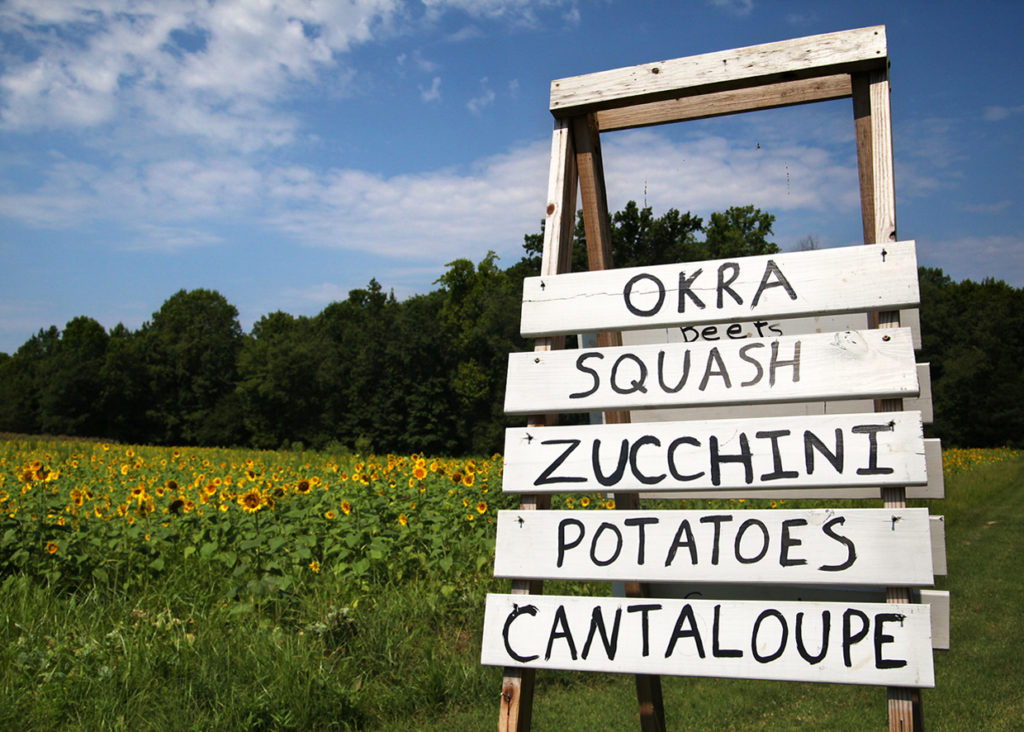
Above: Roadside fruit stand sign in Montpelier, Virginia
Still being honest, I initially intended to merely hit up some backroads and farmers markets in and around Hanover for local corn and tomatoes, and I’d maybe bring back some sweet Silver Queen to Deb on an afternoon when we weren’t fighting over money, priorities, or past indiscretions. The road appealed to me as much for its soundtrack of silence as the local produce found off of its side. But then one morning, in the city, oddly enough, at the South of the James Farmers Market, I found a yellow spotted watermelon. That melon would compel me to venture much farther than Hanover.
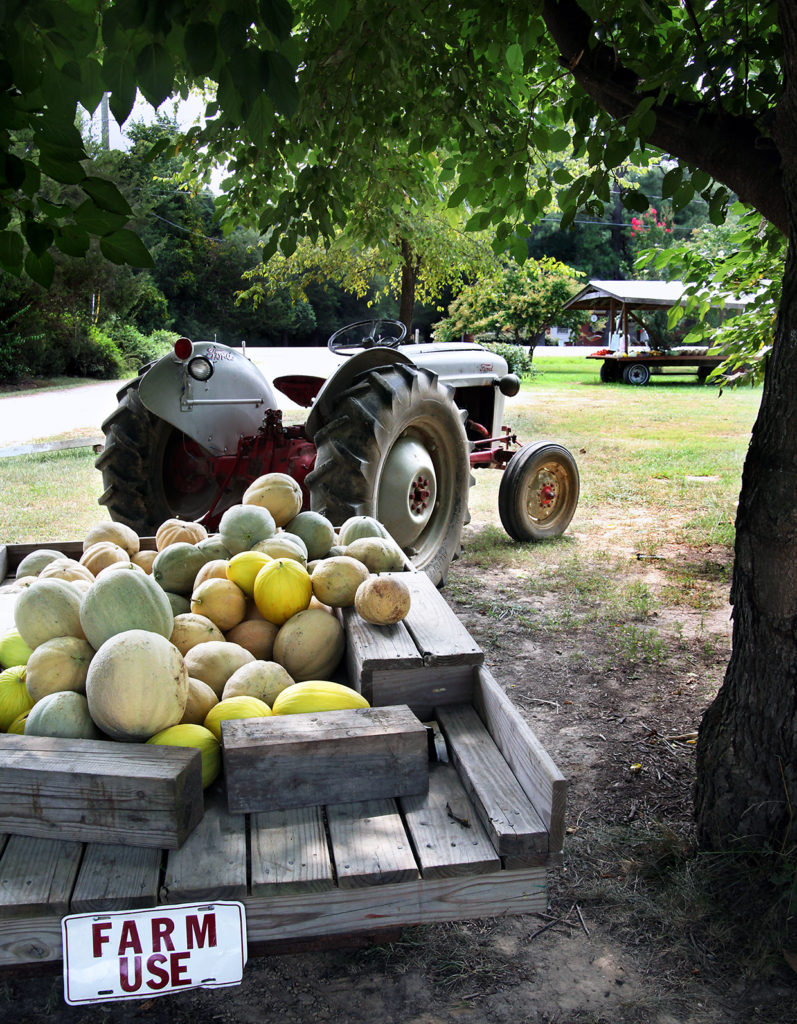
Above: Roadside fruit stand and tractor in Hanover, Virginia
Watermelons with yellow flesh, like that of the spotted Moon and Stars variety, hit my radar first when I happened upon a roadside fruit stand complete with an accompanying Ford tractor muskmelon display a couple weeks before. Until picking up a watermelon on a whim from that fruit stand – they didn’t have sweet corn – I’m embarrassed to say I thought all watermelons were red fleshed. The taste of the Moon and Stars, however, with its strong honey and apricot notes, was vastly superior not only to the seedless yellow fleshed watermelon that first piqued my interest but all red flesh watermelons I’ve had. The Moon and Stars was an heirloom, I would come to learn, and down the rabbit hole I went, first driving up and down the state of Virginia and then the greater east coast, chasing the taste of that superior yellow spotted watermelon and all its heirloom brethren.
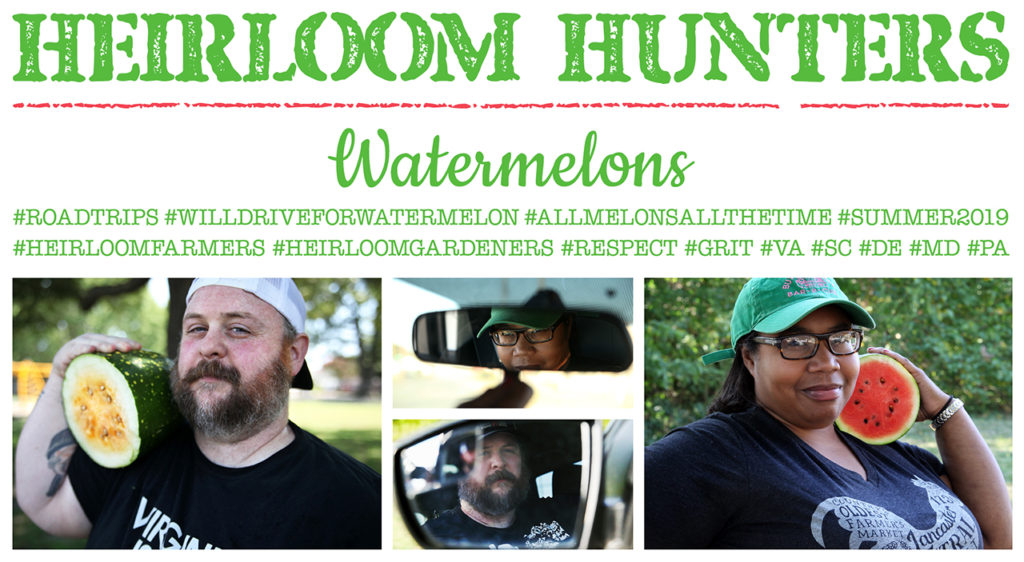
In the dawning days of the 2019 Summer Season, venerable vegetable and fruit trackers Debra “Stone Fruit” Freeman and Joshua “Fruit Stand” Fitzwater donned their trusty baseball caps and surveyed the Commonwealth for Citrullus lanatus. Soon thereafter, a pact was born. Deb and Fitz would hit the road until the short date of summer’s lease in search of all verifiable heirloom watermelons within drivable distance of Richmond, Virginia. “Within drivable distance” varied depending on who you spoke with. Fitz was eager. Deb was wary.
This not-so-perfunctory pact took the duo across much of the original thirteen colonies. The heroic and hungry Heirloom Hunters stalked and secured the most wily of melons-the Moon and Stars, Missouri Heirloom, Yeni Dunya, Royal Golden, Odell’s White, Bradford, Ali Baba, Georgia Rattlesnake, and the Ancient Crookneck. The bounty was plentiful. The seed spitting, substantial.

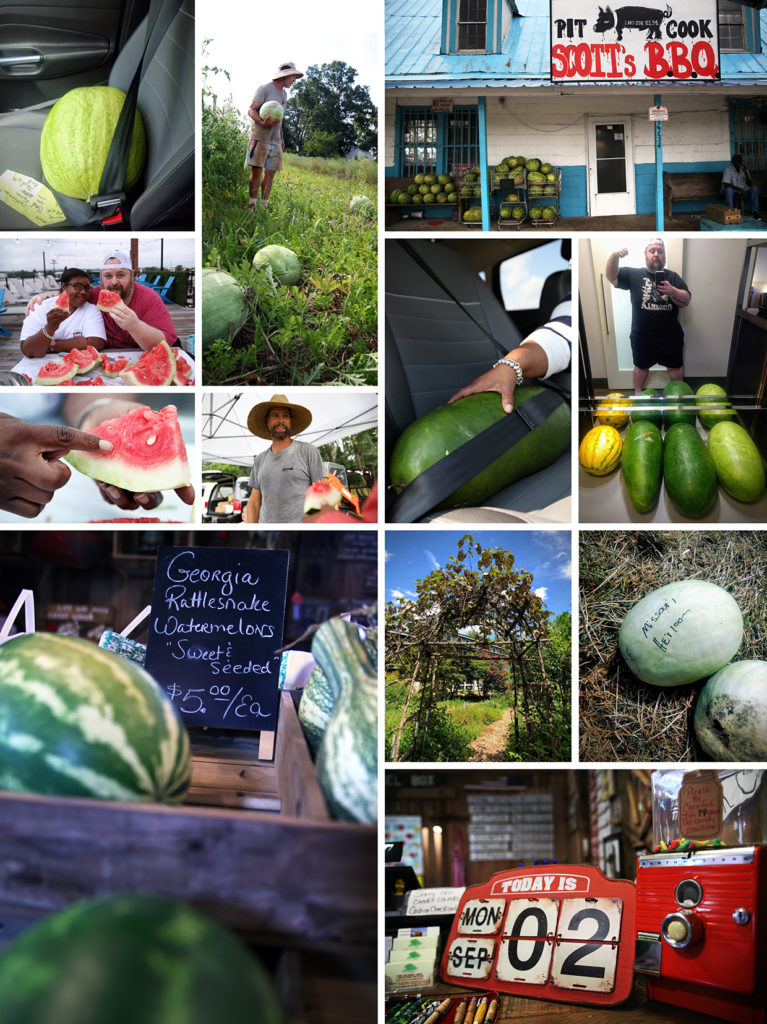
At the onset, our dear heirloom hunters ventured to lands both near and far, attempting to quench the nearly impossible thirst for sacchariferous red and yellow flesh. Their trusty black iron horse led them to explore the Bradford fields of Sumter, South Carolina, the Virginia farmlands of Crumptown and Southern Exposure Seed Exchange in Farmville and Mineral, and the nearly hidden outpost of Bragunier Orchard & Market in the hamlet of Big Pool, Maryland. While in South Carolina, “Stone Fruit” insisted upon satiating her long held need for smoked meats from the famed Scott’s Barbecue in Hemingway. “Stone Fruit” was pleased. “Fruit Stand” nearly died.
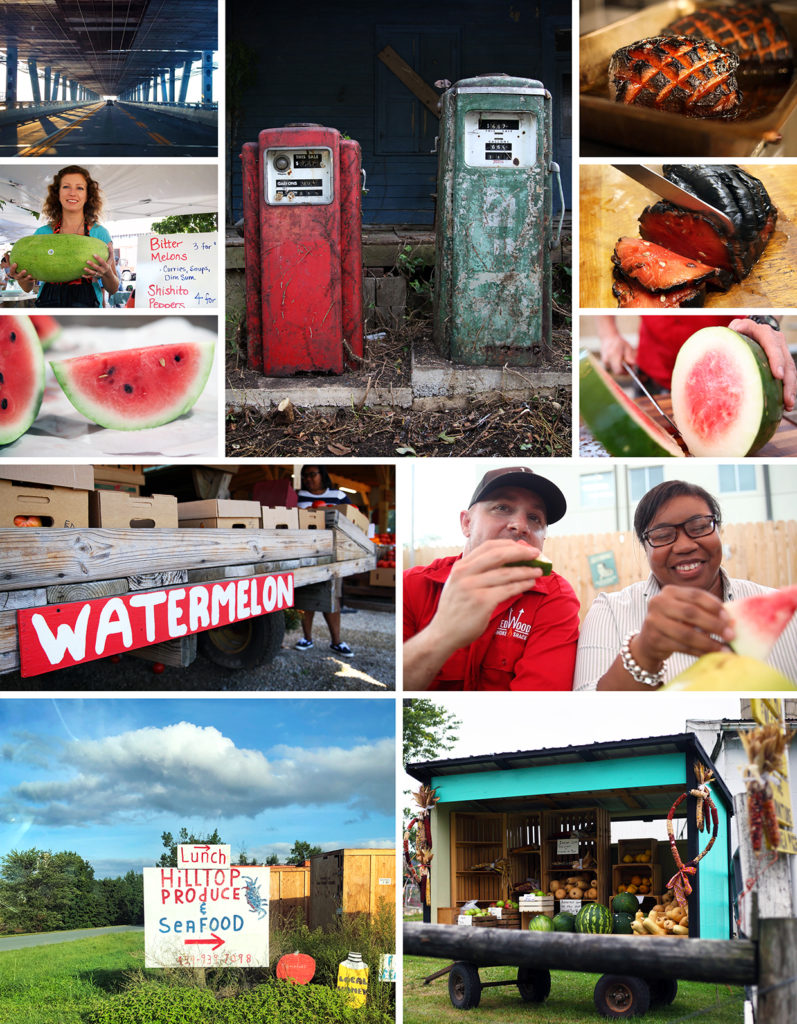
One early morning, Stone Fruit and Fruit Stand found themselves near the downs of Dover in Delaware, and encountered the proprietor of One Hawk Homestead who graciously shared one of her Ali Baba watermelons. After obtaining the Iraqi melon, they came across a naysayer who told them she “ain’t never heard of no Ali Babas…that there’s a pollinatin’ melon.” The two were nervous, and sought out the mighty Google, who reassured them the drive was not in vain. After the averted potential devastation, a celebration was had at Redwood Smoke Shack in the form of a smoked watermelon, prepared by Bob Roberts and Floyd. Alas, the season was winding down, and after days of searching, the duo found some of the last crops of the season at Berry’s Produce in Mechanicsville, Virginia. Fruit Stand was saddened to see his search nearly over. Stone Fruit went to sleep.
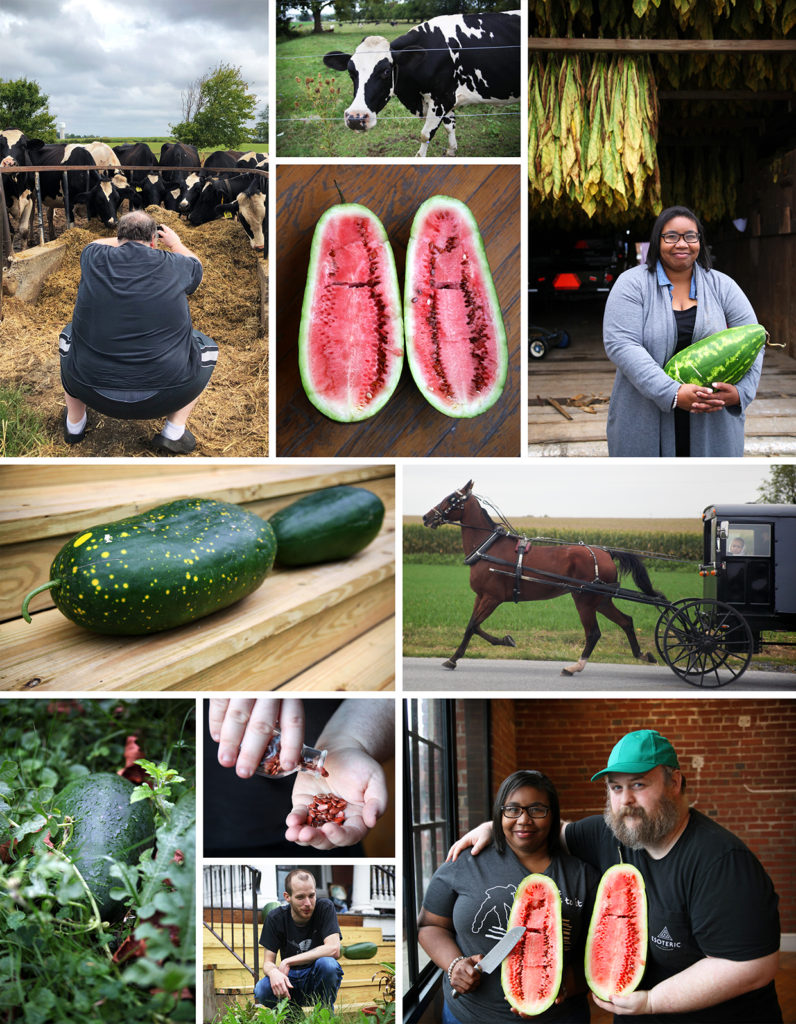
That rest was short lived, however, as Stone Fruit was awakened before the dawn yet again by Fruit Stand to take one more arduous pilgrimage. This time to the state of Keystone, known as Pennsylvania, to acquire the Holy Grail – the Ancient Crookneck. Word came by messenger that there was a gallant gardener, Michael Rae Lunkwitz, who was in possession of the rarely seen fruit. Along the way, Fruit Stand encountered roadside cows, fruit grown by Amish, delicacies prepared without the modern invention of electricity, and trespassed on various farms. As watermelon season ended, Fruit Stand meticulously and obsessively saved the precious seeds from the summer’s hunt, while Stone Fruit bought new pillows.

Odell’s White Watermelon
Found at Crumptown Farm | Farmville, VA
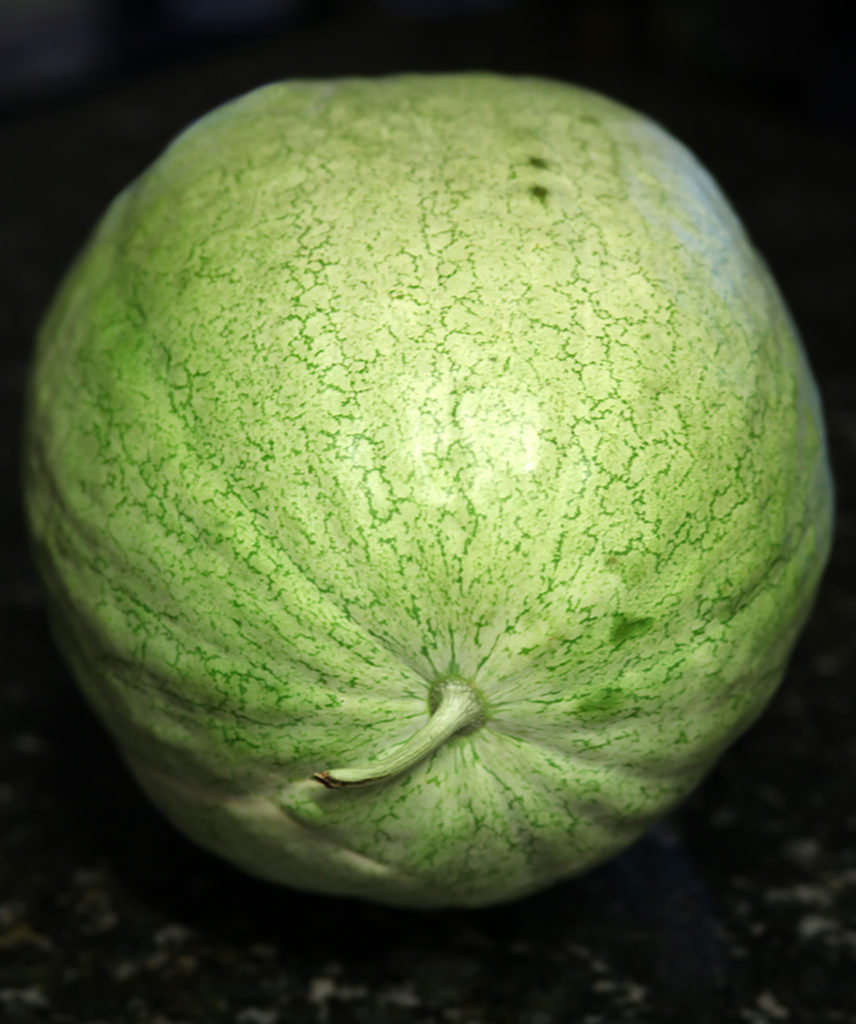
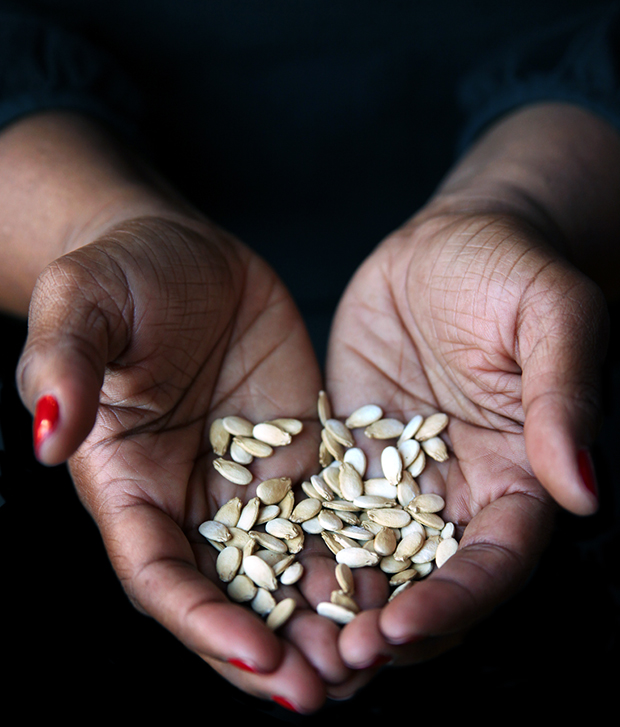
Named after famed grower Milton Odell of Mollohon, SC in the 1840s, The Odell’s White watermelon has light grayish-green skin, white seeds and sweet pinkish-red flesh. It is the only commercial American watermelon variety attributed to an African-American seedsman, a man named Harry who was the foreman of pomologist William Summer’s plantation in Pomaria, SC. In the 1890’s it fell out of favor but survived under the name “Stoney Mountain” with the Metze family of Little Mountain, SC growing it in the Dutch Fork region of the state unto the 21st century. There, it was identified by Dr. Jim Kibler of Whitmire, SC as the famed Odell’s White. Today, it is guarded over by seedsman Rodger Winn who has distributed seeds to the Southern Exposure Seed Exchange.
Bradford Watermelon
Found at the Bradford Watermelon Company Farm | Sumter, SC
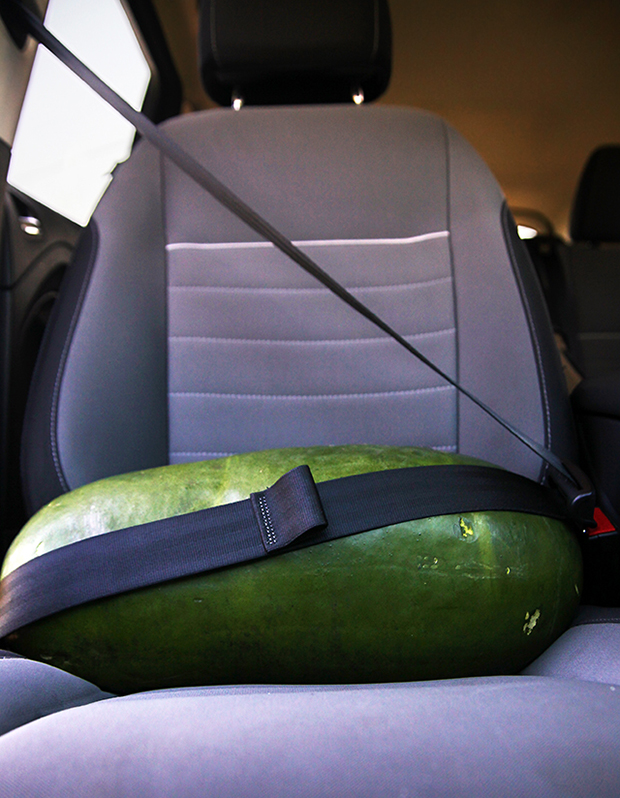
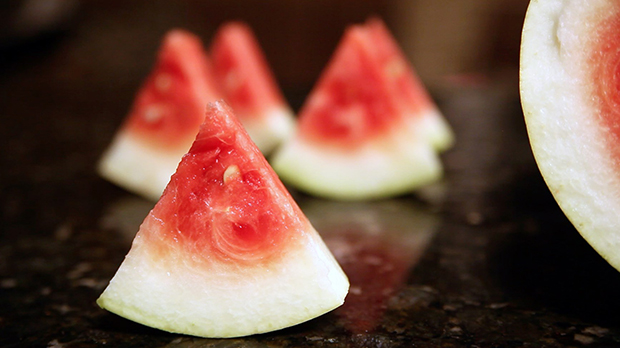
Developed in South Carolina in the 1850s by Nathaniel Bradford and prized for its taste, the Bradford watermelon lost favor in the 1900s as its delicate rind could not be shipped. It disappeared commercially, but Nat Bradford, the eighth-generation namesake, revived it in recent years. It has dark green skin, crisp red flesh and white seeds.
Ali Baba Watermelon
Found at One Hawk Homestead | Dover, DE
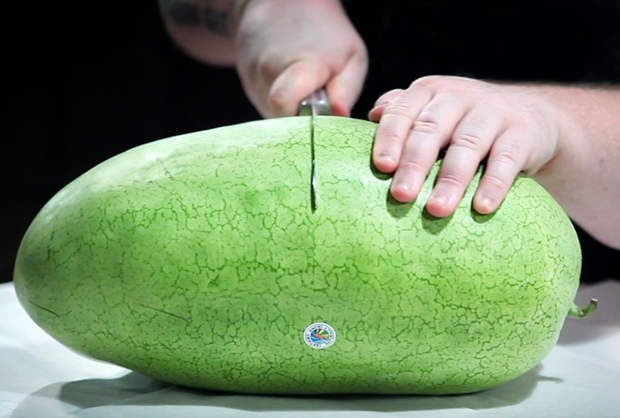
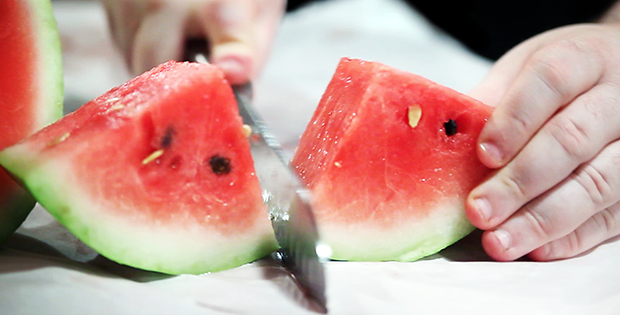
An Iraqi variety introduced twelve years ago into the American seed exchange world by Aziz Nael, an Iraqi gentleman who collected the variety in Iraq and wished to preserve and share it. A very sweet oblong watermelon, it has a thick light green skin, crisp red flesh and speckled brown and black seeds.
Ancient Crookneck Watermelon
Found at Gardener Michael Lunkwitz’s Home | Williamsport, PA
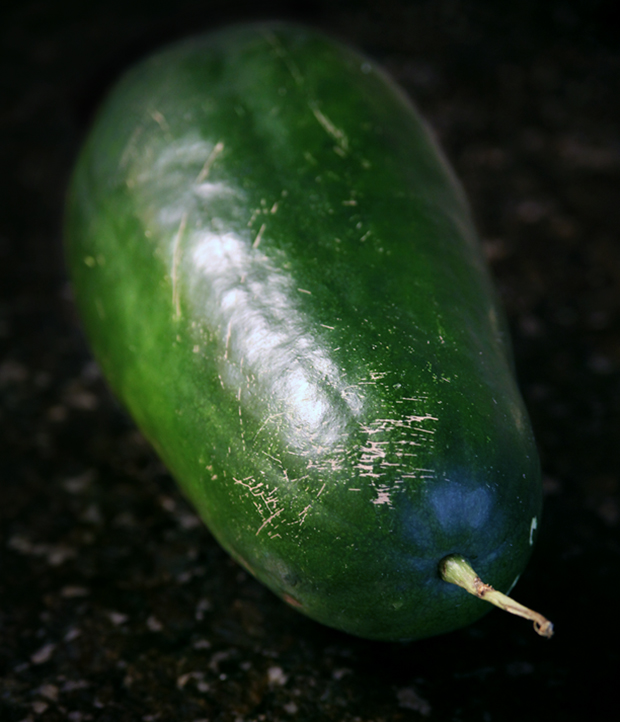
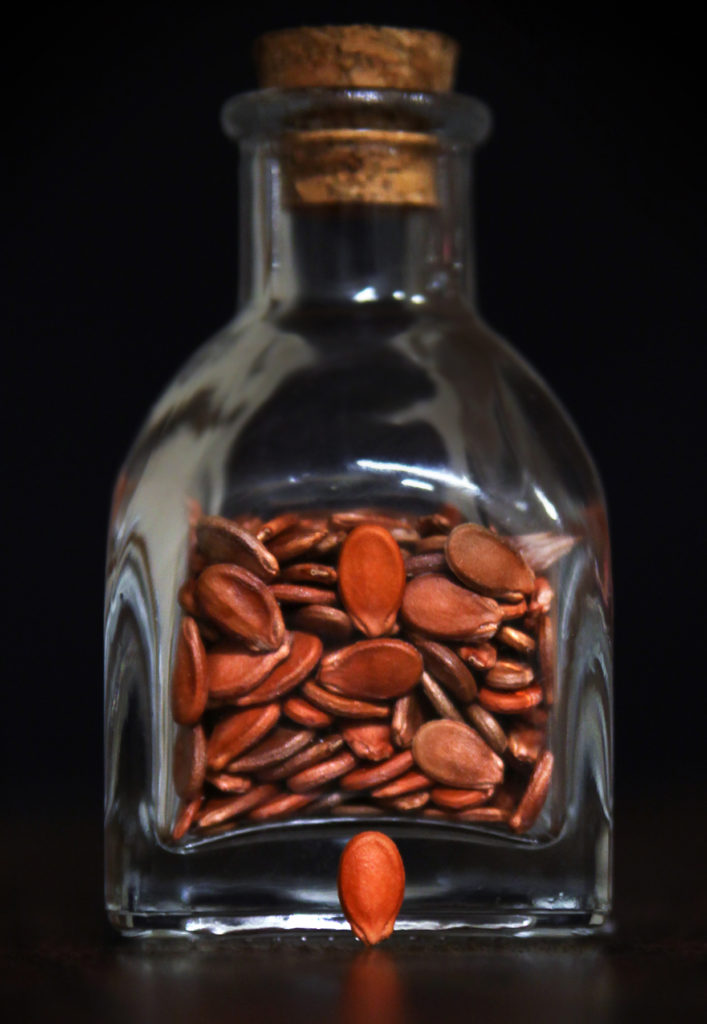
The Ancient Crookneck seeds were found by plant breeder Art Combe in the 1920’s in an abandoned cave likely around the Fort Apache Indian Reservation in White River, Arizona. Inside a small yucca strip bottle he found its red seeds and cultivated them in 1931. It has a dark green rind, handle curved shape and sweet red flesh.
Yeni Dunya Watermelon
Found at Southern Exposure Seed Exchange Farm | Mineral, VA
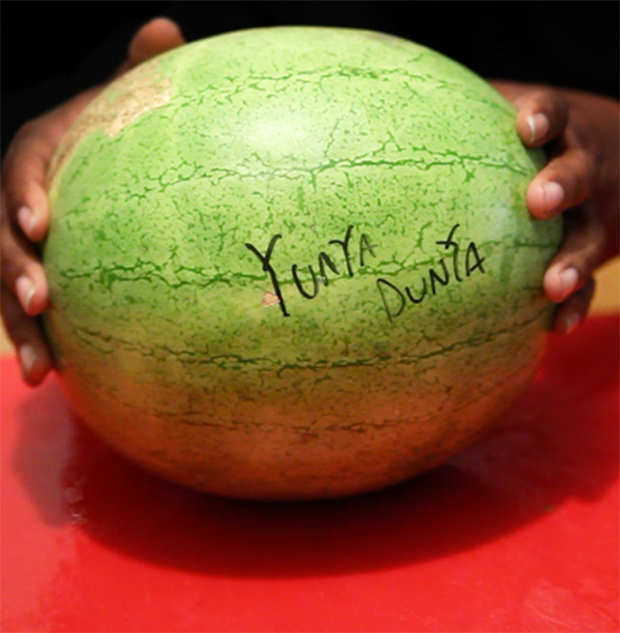
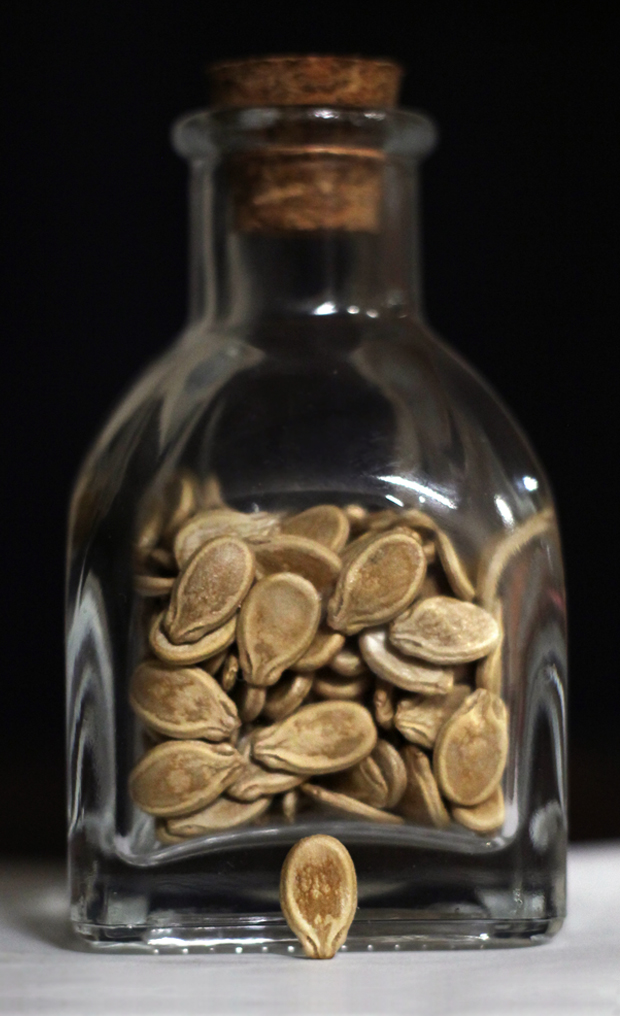
Yeni Dunya means New World, and this heirloom variety comes from the Northwest region of Turkey where it once was grown widely. Introduced in the U.S. in 2017 via the heirloom seed world, this watermelon has a light green semi-thin rind, with red sweet flesh and off-white seeds.
Missouri Heirloom Watermelon
Found at Southern Exposure Seed Exchange Farm | Mineral, VA
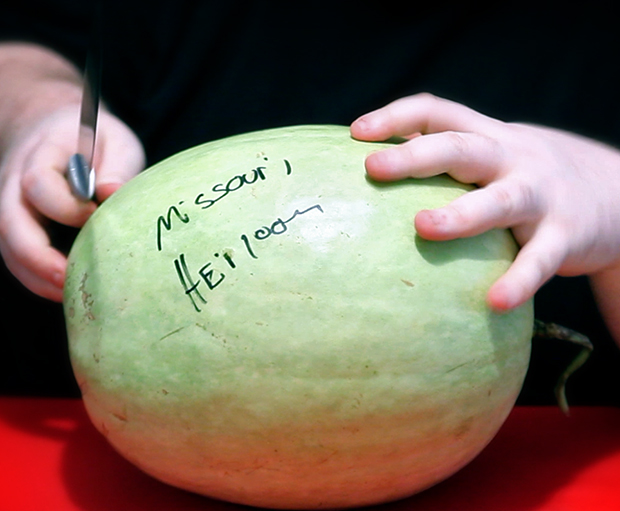
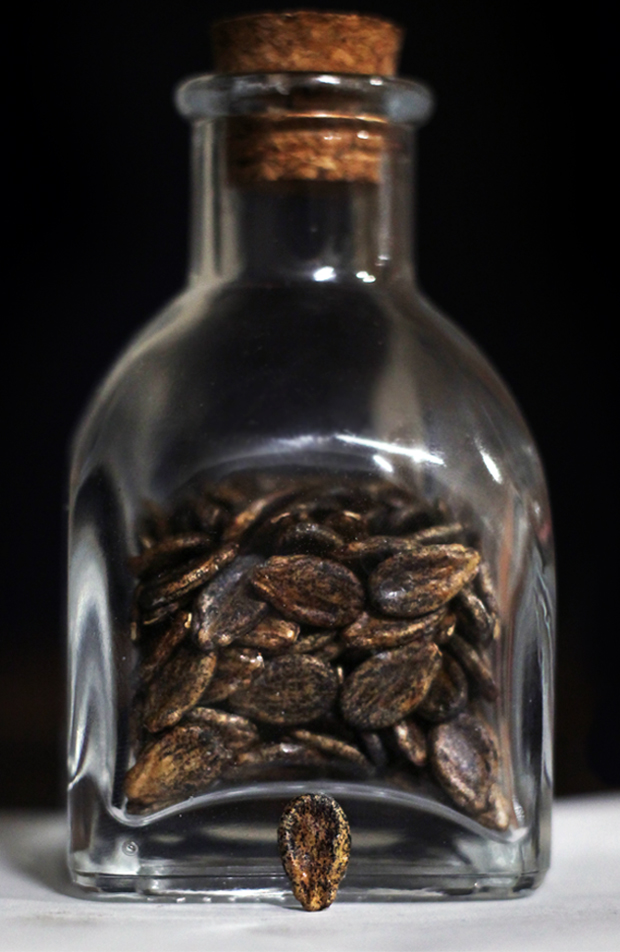
This round heirloom originally comes from the “Show Me” state, Missouri. It has pale green skin, slightly pale yellowish flesh and brown and black speckled seeds. Subtly sweet, this watermelon features light apricot and honey flavor notes. It is also known as the Missouri Heirloom Yellow Fleshed for obvious reasons.
Royal Golden Watermelon
Found at KelRae Farm | Toano, VA
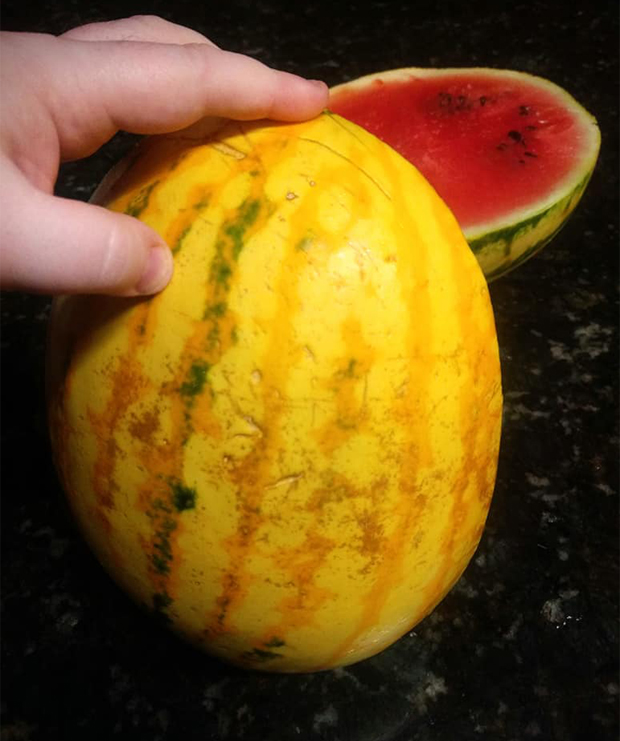
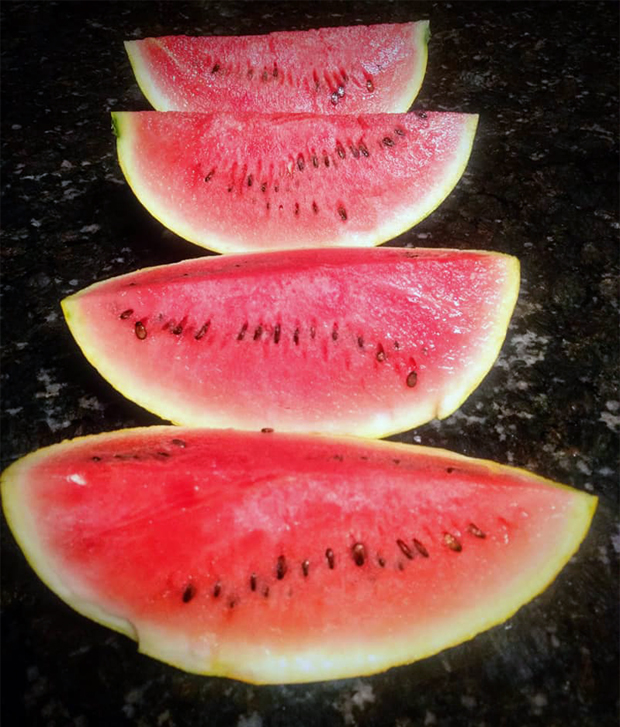
Both the skin and leaves of this watermelon turn yellow/orange when ripe, giving the illusion of disease. A truly unique melon, it has semi-sweet red flesh and a tender texture. Royal Golden seeds are normally white, however, the one we found was possibly cross-pollinated, as the seeds had a brown hue with black specks.
Moon and Stars Yellow Flesh Watermelon
Found at South of the James Farmers Market | Richmond, VA
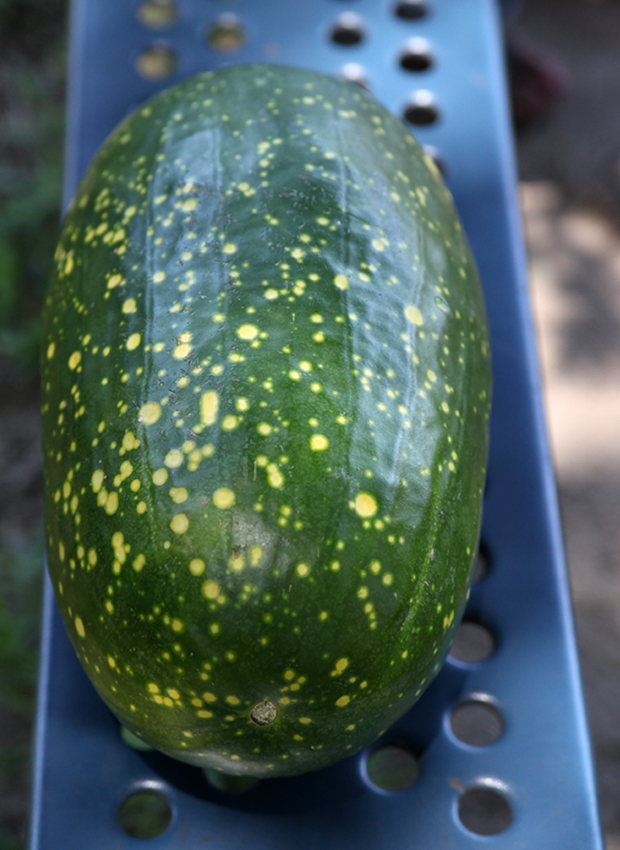
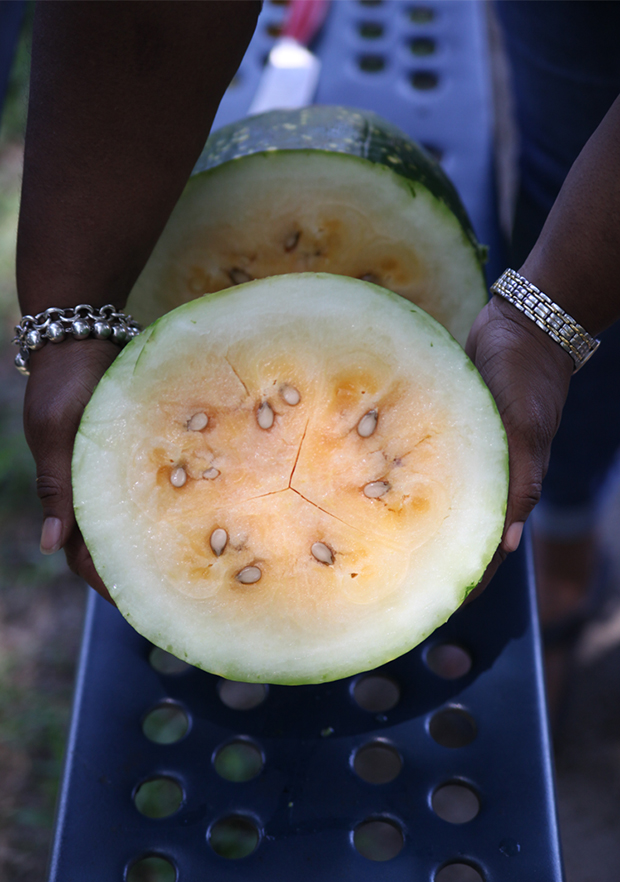
The Tennessee/Missouri ‘Moon and Stars’ was originally called ‘Sun, Moon and Stars’ when it was introduced in 1926. Thought lost, it was reintroduced in 1987 after the Seed Savers Exchange was contacted in 1981 by Merle Van Doren who grew it. It features its namesake yellow spotted skin and red, pink, or yellow flesh.
Article originally featured in the 013 print edition of Southern Grit Magazine.
To order your copy visit HERE or click the image below

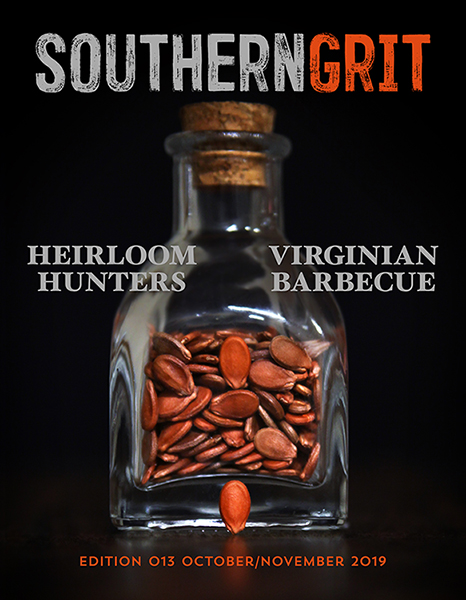


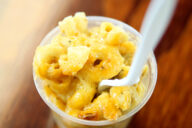


3 Comments
I would love to get some of your seeds.
Here in Texas the Black Diamond variety, preferably from the Hempstead area, about 50 miles west of Texas, is highly prized. We must all make sure these great cultivars are kept going and cherished!
I meant 50 miles west of Houston!